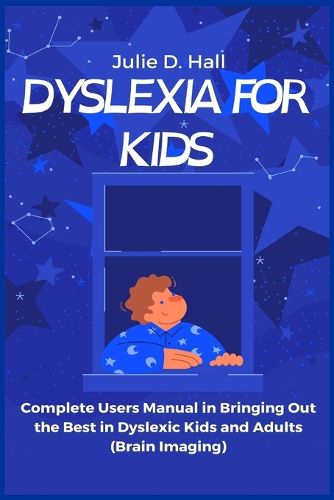Readings Newsletter
Become a Readings Member to make your shopping experience even easier.
Sign in or sign up for free!
You’re not far away from qualifying for FREE standard shipping within Australia
You’ve qualified for FREE standard shipping within Australia
The cart is loading…






This title is printed to order. This book may have been self-published. If so, we cannot guarantee the quality of the content. In the main most books will have gone through the editing process however some may not. We therefore suggest that you be aware of this before ordering this book. If in doubt check either the author or publisher’s details as we are unable to accept any returns unless they are faulty. Please contact us if you have any questions.
Regardless of the many confusions and misunderstandings, the word dyslexia is often utilized by medical personnel, researchers, and clinicians. Among the most typical misunderstandings concerning this condition is that dyslexia is an issue of attention, or term reversals (b/d, was/noticed) or of characters, words, or sentences dance around on the web page (Rayner, Foorman, Perfetti, Pesetsky, & Seidenberg, 2001).
Dyslexia can be an often-misunderstood, confusing term for reading problems. The term dyslexia comprises of two different parts: dys- abnormal, or impaired or difficult, and -lexia signifying words, reading, or vocabulary. So quite actually, dyslexia means difficulty with words (Catts & Kamhi, 2005).
Actually, writing and reading words backwards are normal in the first stages of understanding how to read and write among average and dyslexic children as well, and the existence of reversals may or might not indicate an underlying reading problem…
$9.00 standard shipping within Australia
FREE standard shipping within Australia for orders over $100.00
Express & International shipping calculated at checkout
This title is printed to order. This book may have been self-published. If so, we cannot guarantee the quality of the content. In the main most books will have gone through the editing process however some may not. We therefore suggest that you be aware of this before ordering this book. If in doubt check either the author or publisher’s details as we are unable to accept any returns unless they are faulty. Please contact us if you have any questions.
Regardless of the many confusions and misunderstandings, the word dyslexia is often utilized by medical personnel, researchers, and clinicians. Among the most typical misunderstandings concerning this condition is that dyslexia is an issue of attention, or term reversals (b/d, was/noticed) or of characters, words, or sentences dance around on the web page (Rayner, Foorman, Perfetti, Pesetsky, & Seidenberg, 2001).
Dyslexia can be an often-misunderstood, confusing term for reading problems. The term dyslexia comprises of two different parts: dys- abnormal, or impaired or difficult, and -lexia signifying words, reading, or vocabulary. So quite actually, dyslexia means difficulty with words (Catts & Kamhi, 2005).
Actually, writing and reading words backwards are normal in the first stages of understanding how to read and write among average and dyslexic children as well, and the existence of reversals may or might not indicate an underlying reading problem…